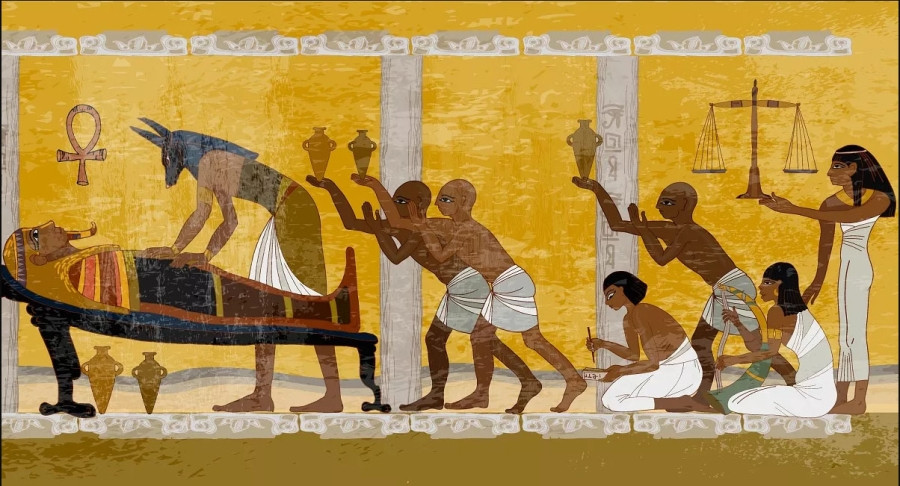A team of researchers from Ludwig Maximilian University and the University of Tübingen (Germany) in cooperation with the National Center for Egyptology has succeeded in deciphering some of the secrets of the mummification process of ancient Egyptians.

Revealing some secrets in the mummification process of ancient Egyptians. Photo: wondriumdaily.com
In Egypt, scientists analyzed organic substances remaining inside ceramic jars discovered by the late archaeologist Ramadan B. Hussein in 2018 at a burial site excavated in the Saqqara necropolis, about 30 kilometers south of Cairo. According to Mostafa Waziri, Secretary General of the Supreme Council of Antiquities (SCA), the research results published on February 1 in the scientific journal Nature showed that the Egyptian and German archaeologists led by Hussein discovered the ancient Egyptian names of organic substances used in the mummification process written in hieroglyphics on the surface of some of the jars.
The names of preserved body parts were also written on these pottery vessels and covered with organic materials during different stages of the mummification process, Mr Waziri added.
The team studied and analyzed the remains of organic matter found inside the ceramic jars in the hope of characterizing their chemical properties. By identifying these properties, they hoped to compare them with the materials used by the ancient Egyptians to preserve the human body, thereby discovering the principles and secrets of the mummification process. For the first time, the scientists were able to identify three aspects of the mummification process including the material used, its name in the ancient Egyptian language, and the body parts covered with the material.
According to Mr. Waziri, the discovery greatly contributes to the scientific community's understanding of famous ancient texts related to the mummification process because for the first time the research team has identified the writings on the ceramic jars by the chemical characteristics inside and thus accurately determined the appropriate material to embalm specific parts of the deceased's body. The discovery also revealed that some of the materials used in the mummification process were imported from other areas of the ancient world, such as the Mediterranean region, the rainforest and Southeast Asia. This suggests the existence of trade and communication links between these regions and ancient Egypt.
Regarding the above discovery, Ms. Susanna Beck, Deputy Head of the Egyptian-German archaeological delegation, said that the research has contributed to "revealing" a lot of knowledge about the components of the materials used for embalming. For example, the substance "antiu", which is often mentioned when describing the embalming process, is translated to mean "aromatic resin" or "frankincense", but the research results show that this is a mixture of oils from cedar, juniper, cypress and animal fat. According to Ms. Beck, this research was carried out using gas chromatography and mass spectrometry on the discovered materials.
According to VNA